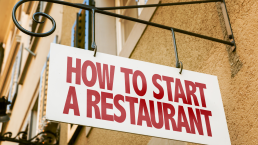The Ultimate Guide to Email and Text Marketing for Your Restaurant
Introduction
In today’s competitive restaurant industry, leveraging email and text marketing can significantly boost your business. If you’re not using these powerful tools, you’re missing out on a high return on investment (ROI) and a chance to keep your restaurant buzzing with customers. Here, we’ll explore seven essential email and text marketing strategies to help you stand out from the competition and drive traffic to your restaurant.
Why Email and Text Marketing?
Before diving into the strategies, let’s understand why email and text marketing are crucial for your restaurant’s success.
- High Open Rates: Text messages have a 98% open rate, with 90% being read within the first three minutes. Email marketing also boasts impressive stats with an average ROI of 4400%.
- Increased Customer Engagement: Subscribers to email and text marketing visit restaurants 47% more often and spend 23% more than non-subscribers.
- Preferred by Customers: A significant 87% of customers appreciate receiving promotional messages, making it a non-intrusive way to stay connected.
Strategy #1: Grow Your Contact List
To start, you’ll need a reliable email and text service provider to store and manage your contacts. Offer enticing incentives like a free appetizer or dessert to encourage customers to sign up. Utilize QR codes for easy sign-up and ensure your staff promotes this to every guest. The bigger your list, the more opportunities you have to drive traffic to your restaurant.
Strategy #2: Send Great Content
Creating engaging content might seem daunting, but it’s essential for keeping your audience interested. Share updates about new dishes, special events, or spotlight staff members. Seasonal promotions and loyalty rewards can also keep your audience engaged. You don’t need to be a professional writer; use templates and tools to help craft your messages.
Strategy #3: Utilize AI Tools
AI tools can significantly streamline the process of writing emails. These tools can generate high-quality content based on your prompts, saving you hours of work. Embrace technology to create a series of emails quickly and efficiently, allowing you to focus on other aspects of your business.
Strategy #4: Automate Your Campaigns
Automation is key to managing your email and text marketing effectively. Set up a series of automated messages to be sent at intervals that you choose. This ensures consistent communication without the need for constant manual input. Use analytics to track the success of your campaigns and make adjustments as needed.
Strategy #5: Maintain Consistency
Consistency is more important than frequency when it comes to marketing. Decide how often you want to send messages and stick to it. Whether it’s weekly emails or bi-weekly texts, regularity helps build anticipation and trust with your customers.
Strategy #6: Optimize Timing
The timing of your messages can greatly influence their effectiveness. Send promotional texts in the late morning or early afternoon to catch customers before they decide on lunch. For dinner promotions, aim for mid-afternoon. Avoid sending messages during peak dining times when customers are less likely to check their phones.
Strategy #7: Learn from Others
Join email and text lists of other restaurants, especially independent ones, to gather ideas and see what works. Observing how successful businesses communicate with their customers can provide valuable insights for your own strategies.
Conclusion
Email and text marketing are powerful tools that can significantly increase your restaurant’s traffic and sales. By growing your contact list, creating engaging content, utilizing AI tools, automating your campaigns, maintaining consistency, optimizing timing, and learning from others, you can effectively harness these strategies to boost your business. Start implementing these tactics today and watch your restaurant thrive.
FAQs
- What incentives should I offer to grow my contact list?
- Offer something valuable like a free appetizer, dessert, or a discount on the next visit to encourage sign-ups.
- How often should I send marketing messages?
- Consistency is key. Aim for weekly emails and bi-weekly texts, adjusting based on customer response.
- What types of content should I include in my messages?
- Share updates on new dishes, staff spotlights, special events, seasonal promotions, and loyalty rewards.
- How can I automate my email and text marketing?
- Use a marketing platform that offers automation features, allowing you to set up a series of messages in advance.
- Why is timing important for sending messages?
- Sending messages at optimal times ensures they are seen and acted upon. Aim for late morning or mid-afternoon for best results.
The Real Costs of Running a Restaurant
25 July 2024
3 Steps to Boost Your Restaurant Business
18 July 2024
Unlocking Restaurant Franchise Opportunities
5 June 2024
Top 5 Menu Psychology Techniques to Increase Sales in Your Food Business
If you’re looking to increase sales and average transaction values in your food business, here are the top five menu psychology techniques to help you achieve just that.
Menu Layout Optimization
The layout of your menu plays a critical role in influencing customer choices. Think of your menu as real estate, where different sections hold varying values. The most valuable area is the top right-hand corner, where customers’ eyes are naturally drawn first. Place your high-profit items in this prime spot and highlight them by putting a box around them, labeling them as “Chef’s Specialty” or “House Specialty.” Changing the font style or size can also draw attention to these items.
Descriptive Language
Using appealing and descriptive language on your menu can significantly increase sales. Your menu should act as a salesperson, enticing customers with vivid descriptions. For example, instead of writing “beef burger,” use “succulent char-grilled beef patty with house-made pickles and double cheese.” Descriptions should include words like “succulent,” “juicy,” and “house-made” to create a mouth-watering image in the customer’s mind.
Tabletop Marketing
Tabletop markers or tent cards are effective silent salespersons. These marketing materials can promote your hero dishes, the most profitable items, even when staff are not around. Place them on every table to keep customers informed about your special offerings, encouraging them to order more.
Limiting Menu Choices
A concise menu can help reduce customer anxiety and decision fatigue. When customers face too many options, they may feel overwhelmed and regret their choices. A limited menu simplifies the decision-making process and can lead to higher satisfaction and faster service. It also helps the kitchen maintain efficiency.
Upselling and Cross-Selling
Training your staff to upsell and cross-sell can significantly boost your average transaction value. Encourage waitstaff to suggest sides, drinks, and add-ons. For instance, if a customer orders a burger, suggest adding premium ingredients or pairing it with a dessert or drink. Upselling involves getting customers to choose a higher-priced item, while cross-selling focuses on adding complementary items to their order.
Additional Tips for Menu Psychology
- Remove Dollar Signs: To prevent customers from focusing on the cost, eliminate dollar signs from your menu. Instead of “$12,” simply write “12.”
- Avoid Price Columns: Placing prices in a separate column can lead customers to choose based on cost rather than preference. List prices next to item descriptions to integrate cost information seamlessly.
- Highlight Provenance: Mention the origin of ingredients, especially if they come from a well-known region. For example, specify “Wagyu beef” or “prime ribs” to add value and entice customers.
- Use In-House Terms: Words like “house-made,” “chef’s specialty,” and “home-baked” imply quality and freshness, making items more appealing.
By implementing these menu psychology techniques, you can enhance the customer experience, encourage higher spending, and boost overall sales in your food business.
The Real Costs of Running a Restaurant
25 July 2024
3 Steps to Boost Your Restaurant Business
18 July 2024
Unlocking Restaurant Franchise Opportunities
5 June 2024
The Real Costs of Running a Restaurant
Running a restaurant is often perceived as a lucrative business with high profit margins. However, the reality is far more complex. Despite the bustling appearance of many restaurants, the profit margins are often slim, and the majority of revenue goes towards covering a multitude of expenses. Understanding these costs is crucial for both restaurant owners and employees to ensure the business remains viable and successful.
The Misconception of Profit Margins
A common misconception among restaurant employees and the general public is that restaurant owners keep a large portion of sales revenue as profit. When asked how much of each dollar in sales they think the owner retains, many estimate between 30 to 50 cents. In reality, most independent restaurants make a net profit of less than 10 cents per dollar in sales after all expenses are paid.
Major Expense Categories
Labor Costs
The largest expense for most restaurants is labor. This includes the gross wages of all staff, from managers to line cooks and servers. Labor costs typically consume about 30 cents of every sales dollar. Additionally, restaurants must cover federal and state payroll taxes, as well as other employee-related expenses and benefits, adding another 5 to 6 cents to the labor cost.
Food and Beverage Costs
The next significant expense is the cost of food and beverage products, which usually accounts for about 30% of sales. Whether a restaurant serves alcohol or not, the combined cost of ingredients and beverages generally takes up around 30 cents per dollar of revenue.
Operating Expenses
Utilities and Maintenance
Restaurants incur various operating expenses, including utilities such as electricity, gas, and water. Maintenance costs for equipment and facilities are also substantial, ensuring everything from kitchen appliances to HVAC systems are in working order.
Supplies and Products
Operational supplies are another necessary expense. This includes cleaning supplies, paper products, decorations, pest control, silverware, pots and pans, and laundry and linen services. These costs, known as direct operating expenses, are essential for daily operations.
Administrative Costs
Administrative expenses cover a wide range of necessary services and fees. These include legal and accounting services, security, computer software, liability insurance, and transaction fees for credit and debit card payments.
Fixed Costs
Occupancy Costs
Occupancy costs, such as rent, property taxes, and building insurance, typically run around 8 to 9% of sales. These costs are fixed and must be paid regardless of the restaurant’s sales volume.
Depreciation and Interest
Depreciation represents a portion of the cost of the building, furniture, and kitchen equipment. Many restaurant owners also have interest expenses from loans taken out to cover startup costs. Both depreciation and interest are ongoing expenses that must be accounted for in the budget.
The Importance of Efficiency
Given the numerous expenses involved in running a restaurant, the profit that remains after covering all costs is often minimal. This is why it is crucial for everyone in the restaurant to be mindful of waste and inefficiency. Minimizing waste, properly rotating products, and accurately managing portion sizes can significantly impact the overall profitability of the restaurant.
Conclusion
Operating a restaurant is a complex and costly endeavor. The apparent revenue from sales can be deceptive, as the majority of it goes towards covering various necessary expenses. By understanding these costs and working efficiently, restaurant staff can help ensure the business remains profitable and continues to provide excellent dining experiences and employment opportunities.
FAQs
- What is the average profit margin for independent restaurants?
Independent restaurants typically have a net profit margin of less than 10% after all expenses are paid.
- Why are labor costs so high in the restaurant industry?
Labor costs are high because they include not only wages but also payroll taxes and employee benefits.
- How can restaurants reduce their operating costs?
Restaurants can reduce operating costs by minimizing waste, accurately managing inventory, and ensuring efficient use of supplies and utilities.
- What are direct operating expenses in a restaurant?
Direct operating expenses include costs for supplies and products used in daily operations, such as cleaning supplies, paper products, and kitchen equipment.
- Why is it important for restaurant staff to understand the costs of running a restaurant?
Understanding the costs helps staff appreciate the importance of efficiency and minimizes waste, contributing to the overall profitability and sustainability of the restaurant.
The Real Costs of Running a Restaurant
25 July 2024
3 Steps to Boost Your Restaurant Business
18 July 2024
Unlocking Restaurant Franchise Opportunities
5 June 2024
3 Steps to Boost Your Restaurant Business
Introduction
Welcome! Today, I’m excited to share a powerful marketing strategy that you can start implementing immediately to attract more customers to your restaurant. With this three-step approach, you’ll see how a few strategic actions can lead to significant growth in your customer base.
Understanding the Industry
Having worked with hundreds of restaurants across various categories—fast food, fast casual, and sit-down—we have gathered valuable insights and statistical data over the past three years. This experience has shaped our understanding of effective marketing strategies that deliver results.
The Three-Step Approach
Step 1: The First Visit
Our goal is to get a customer to visit your restaurant three times. If we can provide a great experience and delicious food on their first visit, there’s a 40% chance they will return. This initial visit is crucial for making a lasting impression.
Step 2: The Second Visit
When customers come back for the second time and have another exceptional experience, the likelihood of a third visit increases to 42%. Consistency in quality and service is key during these initial visits.
Step 3: The Third Visit
The third visit is the turning point. If customers enjoy their experience again, there’s a 70% chance they will become regular patrons. By this stage, you’ve likely won a customer for life, as they will continue to return frequently.
Implementation Tactics
Attracting the First Visit
To encourage the first visit, offer a free item such as a side dish or appetizer. Choose something that pairs well with other menu items, ensuring customers will order more. This tactic breaks customers’ usual dining habits and incentivizes them to try something new.
Enhancing the Experience
During their visit, use subtle signals like a different napkin color to indicate first-time customers. This allows your staff to give them extra attention and ensure they have a memorable experience.
Encouraging Return Visits
Before customers leave after their first visit, give them a coupon for a free item on their next visit. Repeat this for the second visit to incentivize a third. By the third visit, a small free item can cement their loyalty.
Return on Investment
Investing in these free items might seem costly, but consider the lifetime value of a customer. If a $10 investment leads to a customer spending $100 over the year, the return on investment is substantial. This strategy is cost-effective and can be implemented immediately.
Digital Supercharging
While these steps can be done manually, digitizing the process can enhance effectiveness. Online promotions, email marketing, and social media engagement can supercharge your strategy, reaching a wider audience and bringing in more customers.
Conclusion
By implementing this three-step approach, you can significantly grow your restaurant’s customer base. Offer a great experience, incentivize return visits, and consider digitizing your strategy to maximize results. Start today and watch your restaurant thrive!
FAQs
- What kind of free items should I offer?
- Offer something that complements other menu items, like appetizers or side dishes, which encourages customers to order more.
- How can I identify first-time customers?
- Use subtle signals, like different colored napkins, to alert staff to give extra attention to these customers.
- Is offering free items costly?
- While there is an initial cost, the return on investment is significant as these customers are likely to become regulars.
- How can I digitize this strategy?
- Use online promotions, email marketing, and social media to reach a broader audience and streamline the process.
- Why is the third visit so important?
- By the third visit, there’s a 70% chance the customer will become a regular, making it crucial for long-term loyalty.
This strategy has been proven to work across various types of restaurants. Start implementing these steps today to see immediate results in customer retention and satisfaction.
The Real Costs of Running a Restaurant
25 July 2024
3 Steps to Boost Your Restaurant Business
18 July 2024
Unlocking Restaurant Franchise Opportunities
5 June 2024
How to Open a Restaurant in Canada: A Comprehensive Guide
Are you dreaming of opening your own restaurant in Canada? Have you ever wondered ‘how do I even open a restaurant in Canada?’ The restaurant industry is thriving, offering a world of opportunity for aspiring restaurateurs. However, starting a restaurant involves careful planning, dedication, and an understanding of the unique challenges in the Canadian market. This guide will walk you through the essential steps to open a successful restaurant in Canada.
Our 7-Step Guide to Open a Restaurant in Canada:
Step 1: Research and Planning
Understanding the Market
Before diving into the restaurant business, it’s crucial to conduct thorough market research. Analyze the local market to understand the demand, competition, and consumer preferences. Consider factors like location, demographics, and the type of cuisine that will attract customers.
Creating a Business Plan
A well-structured business plan is the foundation of your restaurant. It should include:
- Executive Summary: An overview of your restaurant concept.
- Market Analysis: Insights from your research.
- Business Model: Details on your service style, menu, and pricing.
- Marketing Plan: Strategies to attract and retain customers.
- Financial Plan: Budget, funding sources, and revenue projections.
Step 2: Securing Funding
Opening a restaurant requires significant capital investment. Explore various funding options such as personal savings, bank loans, or attracting investors. Having a solid business plan will be essential in convincing lenders or investors to support your venture.
Step 3: Choosing the Right Location
The location of your restaurant can make or break your business. Look for a spot with high foot traffic, good visibility, and easy access. Consider the rent, local competition, and the target demographic when selecting your location.
Step 4: Legal Requirements and Permits
Business Registration
Register your business with the appropriate provincial or territorial authorities. Choose a business structure that suits your needs, whether it’s a sole proprietorship, partnership, or corporation.
Permits and Licenses
To legally operate a restaurant in Canada, you’ll need several permits and licenses, including:
- Business License: Issued by your local municipality.
- Food Service Establishment Permit: Required for preparing and serving food.
- Liquor License: Necessary if you plan to serve alcohol.
- Health and Safety Inspections: Regular inspections to ensure compliance with health regulations.
Step 5: Designing Your Restaurant
Interior Design
Create an inviting and functional interior that aligns with your brand and appeals to your target customers. Consider hiring a professional designer to optimize your space.
Equipment and Supplies
Invest in high-quality kitchen equipment, furniture, and supplies. Ensure your kitchen layout is efficient and meets health and safety standards.
Step 6: Hiring and Training Staff
Your staff plays a crucial role in the success of your restaurant. Hire experienced chefs, cooks, servers, and support staff. Provide comprehensive training to ensure they deliver excellent service and maintain high standards of hygiene and safety.
Step 7: Marketing and Promotion
Creating a Brand
Develop a strong brand identity with a memorable name, logo, and tagline. Your brand should reflect your restaurant’s concept and appeal to your target audience.
Digital Marketing
Leverage digital marketing strategies to promote your restaurant. Create a professional website, engage with customers on social media, and invest in online advertising. Encourage satisfied customers to leave positive reviews on platforms like Google and Yelp.
Grand Opening
Plan a grand opening event to generate buzz and attract customers. Offer special promotions or discounts to entice people to try your restaurant.
Joey’s Franchise Group: Your Partner in Success
Opening a restaurant can be a daunting task, but you don’t have to do it alone. At Joey’s Franchise Group, we provide comprehensive support to ensure your restaurant’s success. Here’s how we help:
- Market Research and Location Selection: We assist with detailed market analysis and help you choose the perfect location.
- Business Planning and Funding: Our experts guide you through creating a robust business plan and securing necessary funding.
- Permits and Legal Compliance: We help navigate the complex process of obtaining all required permits and licenses.
- Restaurant Design and Setup: Our team provides support in designing an appealing and efficient restaurant layout.
- Staff Hiring and Training: We offer resources and training programs to build a skilled and dedicated team.
- Marketing and Promotion: Benefit from our proven marketing strategies to effectively promote your restaurant and attract customers.
By partnering with Joey’s Franchise Group, you gain access to our extensive experience and resources, making the process of opening a restaurant in Canada smoother and more successful.
Conclusion
Opening a restaurant in Canada is an exciting and rewarding venture. By following these steps and staying committed to your vision, you can create a successful restaurant that stands out in the competitive Canadian market. Remember, the key to success lies in meticulous planning, dedication, and a passion for delivering exceptional dining experiences.
For more insights and tips on running a successful restaurant, explore our blog at Joey’s Franchise Group. We’re here to support aspiring restaurateurs every step of the way.
The Real Costs of Running a Restaurant
25 July 2024
3 Steps to Boost Your Restaurant Business
18 July 2024
Unlocking Restaurant Franchise Opportunities
5 June 2024
Unlocking Restaurant Franchise Opportunities
Unlock Restaurant Franchise Opportunities with Joey’s Franchise Group
Are you looking to dive into the world of restaurant franchise opportunities? Joey’s Franchise Group offers a diverse range of exciting and profitable franchise options. With our well-established brands, including Joey’s Fish Shack, Streats, and Dual Concept franchises, you can become a part of a thriving business with a proven track record.
Joey’s Fish Shack: A Taste of Tradition
One of the most appealing restaurant franchise opportunities we offer is Joey’s Fish Shack. Known for its delicious fish and chips, Joey’s Fish Shack combines tradition with modern culinary trends to create an inviting dining experience. This franchise opportunity allows you to bring a beloved brand to your community, offering quality seafood that keeps customers coming back for more.
Why Choose Joey’s Fish Shack?
- Established Brand: Benefit from the recognition and trust of a brand that has been delighting customers for years.
- Proven Business Model: Leverage a successful business model with comprehensive training and support.
- Marketing Support: Access to professional marketing strategies to drive traffic and boost sales.
- Quality Ingredients: Serve top-notch seafood with a commitment to quality and freshness.
Explore more about Joey’s Fish Shack here.
Streats: Global Flavors on the Go
Another exciting franchise opportunity from Joey’s Franchise Group is Streats. This unique concept brings together a variety of global street foods, offering a diverse and vibrant menu that appeals to a wide range of customers. From gourmet tacos to savory poutines, Streats is all about delivering bold flavors in a fast-casual setting.
Why Choose Streats?
- Diverse Menu: Attract a broad customer base with a menu featuring flavors from around the world.
- Fast-Casual Concept: Capitalize on the growing trend of fast-casual dining, offering quality food quickly.
- Innovative Marketing: Benefit from innovative marketing campaigns designed to increase brand awareness.
- Supportive Network: Join a supportive franchise network with extensive training and ongoing assistance.
Discover more about the Streats franchise opportunity here.
Dual Concept: The Best of Both Worlds
For entrepreneurs looking for a unique and profitable venture, Joey’s Franchise Group offers the Dual Concept franchise. This innovative approach combines the best elements of Joey’s Fish Shack and Streats, providing customers with a diverse dining experience under one roof. The Dual Concept franchise maximizes your investment by catering to a wide range of tastes and preferences.
Why Choose the Dual Concept Franchise?
- Increased Revenue: Tap into multiple revenue streams by offering a variety of menu options.
- Enhanced Customer Experience: Provide customers with more choices, increasing satisfaction and repeat visits.
- Operational Efficiency: Benefit from streamlined operations and shared resources.
- Comprehensive Support: Receive extensive training and support to ensure your success.
Learn more about our Dual Concept franchise here.
Why Joey’s Franchise Group?
Choosing to franchise with Joey’s Franchise Group means partnering with a company that prioritizes your success. We provide:
- Extensive Training: Comprehensive training programs to equip you with the skills needed to run a successful franchise.
- Marketing Expertise: Proven marketing strategies to attract and retain customers.
- Operational Support: Ongoing operational support to help you navigate any challenges.
- Community Focus: A commitment to being an integral part of the communities we serve.
If you’re ready to explore restaurant franchise opportunities, Joey’s Franchise Group offers the perfect blend of tradition, innovation, and support. Contact us today to learn more about how you can join our family of successful franchises.
Join the Joey’s Franchise Group Family Today
At Joey’s Franchise Group, we are passionate about helping our franchisees succeed. With a rich history of excellence, a commitment to quality, and a variety of franchise opportunities tailored to different tastes and markets, we offer a solid foundation for your entrepreneurial journey. Embrace the chance to be part of a dynamic and supportive network, and turn your dream of owning a restaurant into a reality. Discover the potential of restaurant franchise opportunities with Joey’s Franchise Group, and start building your future today. Contact us now to get started on this exciting path.
The Real Costs of Running a Restaurant
25 July 2024
3 Steps to Boost Your Restaurant Business
18 July 2024
Unlocking Restaurant Franchise Opportunities
5 June 2024
Hidden Potential of Restaurants: How Customer Data Can Skyrocket Your Sales
What Can a Restaurant do with a Customer Data Base?
In the fiercely competitive restaurant industry, traditional marketing strategies like paid ads and influencer collaborations can only take you so far. There’s a powerful, often overlooked asset that can transform your business: your customer data. Imagine a simple, cost-effective approach that not only drives repeat visits but also boosts your revenue significantly. Welcome to the world of customer data-driven marketing.
Successful independent restaurants know one thing for sure: building and leveraging a customer data list is the golden ticket to sustained growth. Here’s why this strategy is your ultimate game-changer for 2024.
1. Turbocharge Sales on Slow Days
Every restaurant faces slow days, but what if you could turn those around with a single click? Many restaurateurs resort to social media, hoping to catch some eyeballs. But here’s the harsh reality:
Limited Engagement: Only about 10% of your followers will see your social media posts.
Irrelevant Audience: A significant portion of your followers might not even be local or have visited your restaurant.
Now, imagine having a list of loyal customers who already love your food. By sending a targeted email or SMS to 10,000 customers, you can instantly generate foot traffic and sales. This method is not only cost-effective—less than $50 per month for thousands of emails—but also guarantees that your message reaches the right people.
2. Automate Glowing Reviews
Positive reviews are the lifeblood of any restaurant. With a well-maintained customer data list, you can automate the review generation process:
Seamless Requests: Capture customer information during their first visit and send an automated review request.
Consistent Feedback: Ensure a steady flow of reviews without burdening your staff.
Automation takes the guesswork out of the process, ensuring you consistently gather valuable feedback to attract new patrons.
3. Personalize Birthday Promotions
Birthday promotions are a fantastic way to make your customers feel special and drive sales. By knowing your customers’ birthdays, you can send personalized offers that encourage them to celebrate with you. This thoughtful touch can make your restaurant their top choice for birthday celebrations, resulting in a significant sales boost.
Here’s how to start collecting and utilizing this invaluable customer data:
1. Capture Online
Deploy popups on your website to gather customer information, offering irresistible incentives like discounts or freebies to entice sign-ups.
2. Engage In-Store
Use QR codes and visible prompts throughout your restaurant to encourage customers to share their details in exchange for exclusive deals.
3. Leverage Social Media
Design your social media ads with a clear call-to-action that directs followers to sign up for your email list, offering them special promotions in return.
4. Nurture Your VIPs
Once you’ve built your list, the key is to keep these customers engaged and returning for more:
– Regular Updates: Send out regular newsletters with updates, special offers, and personalized messages to stay top of mind.
– Exclusive Deals: Reward your list subscribers with exclusive deals that make them feel appreciated and valued.
– Personalized Communication: Use the data to tailor your messages, making each customer feel unique and special.
Your Path to Restaurant Stardom
By focusing on building and nurturing a robust customer data list, you can drive repeat business, boost sales on slow days, and foster a loyal customer base. This approach is not just effective but also cost-efficient, ensuring maximum return on your marketing investment.
Start harnessing the power of customer data today and watch your restaurant thrive like never before. For more expert tips and strategies to grow your restaurant business, visit our blog and dive into our treasure trove of resources designed to help independent restaurateurs succeed.
The Real Costs of Running a Restaurant
25 July 2024
3 Steps to Boost Your Restaurant Business
18 July 2024
Unlocking Restaurant Franchise Opportunities
5 June 2024
Restaurants 101: How to Manage a Restaurant for Dummies
Managing a restaurant is no small feat. It requires a delicate balance of operational efficiency and human resource development. In this article, we delve into the fundamentals of restaurant management and explore the critical concept of managing systems while developing people.
Why Franchise with Joey’s Franchise Group?
Franchising with Joey’s Franchise Group offers a unique opportunity to leverage a proven business model that streamlines operations and maximizes efficiency. By joining the Joey’s Franchise Group, you gain access to a comprehensive suite of systems and support designed to simplify the complexities of restaurant management. Here’s how franchising with Joey’s helps streamline your business:
- Proven Systems and Processes: Joey’s Franchise Group has developed and refined systems over years of successful operation. These systems cover everything from recruitment and training to daily operations and customer service, ensuring consistency and high standards across all franchise locations.
- Comprehensive Training and Support: As a franchisee, you’ll receive extensive training to understand and implement these systems effectively. Continuous support from experienced professionals helps you navigate challenges and optimize your operations.
- Centralized Resources: Benefit from centralized marketing, supply chain management, and technology solutions that reduce administrative burdens and allow you to focus on delivering exceptional dining experiences.
- Brand Recognition: Joining an established brand like Joey’s provides instant credibility and attracts a loyal customer base, giving you a competitive edge in the market.
- Community and Network: Be part of a network of like-minded franchisees who share best practices, insights, and support, fostering a collaborative environment for growth and success.
By franchising with Joey’s Franchise Group, you not only adopt a successful business model but also gain the tools and support necessary to thrive in the competitive restaurant industry.
The Core Principle: Manage Systems, Develop People
At the heart of effective restaurant management lies one simple yet profound principle: **manage systems, develop people**. This principle underscores the importance of creating robust systems that streamline operations and cultivating an environment where staff can grow and thrive.
Systems are the backbone of any successful restaurant operation. They provide a structured approach to managing tasks and ensure consistency in service and quality. Systems are devoid of emotions; they are black and white, either done correctly or not. This clarity removes ambiguity and allows for straightforward management.
Key Areas Requiring Systems:
- Recruitment and Hiring: From job postings to interviews and onboarding, a well-defined system ensures you attract and retain the best talent.
- Training and Development: Comprehensive training programs and ongoing development plans help staff master their roles and advance their careers.
- Operational Procedures: Detailed checklists and procedures for daily tasks, such as opening and closing routines, inventory management, and customer service protocols, maintain consistency and quality.
- Maintenance and Compliance: Regular maintenance schedules and compliance checklists keep the restaurant running smoothly and within regulatory standards.
Developing People: Beyond Management
People are the lifeblood of any restaurant. While systems streamline operations, it’s the people who bring those systems to life. However, unlike systems, people cannot be managed in the same rigid manner. Instead, they need to be developed.
Steps to Develop Your Team:
- Individual Coaching: Regular one-on-one sessions to provide feedback, set goals, and discuss career aspirations.
- Skill Development: Offering training opportunities, both in-house and external, to enhance skills and knowledge.
- Empowerment: Encouraging decision-making and providing autonomy within the scope of their roles to foster a sense of ownership and responsibility.
- Recognition and Rewards: Implementing a system of recognition and rewards to celebrate achievements and motivate the team.
Practical Implementation: Combining Systems and People Development
To bring the concept of managing systems and developing people to life, consider the following practical steps:
- Document Everything: Create detailed manuals and checklists for all operational tasks. This documentation serves as a training tool and a reference guide for staff.
- Consistent Training: Regularly train staff on these systems and update training materials as needed. This ensures everyone is on the same page and follows the same procedures.
- Regular Reviews: Conduct periodic reviews of both systems and staff performance. Identify areas for improvement and make necessary adjustments.
- Feedback Loop Establish a feedback mechanism where staff can provide input on systems. This not only improves systems but also makes staff feel valued and heard.
The Real Costs of Running a Restaurant
25 July 2024
3 Steps to Boost Your Restaurant Business
18 July 2024
Unlocking Restaurant Franchise Opportunities
5 June 2024
Top 5 Reasons Why Restaurants Fail and How to Avoid Them
Starting a restaurant is a dream for many, but the harsh reality is that more than 60% of new restaurants fail within their first year of operation. Understanding the common pitfalls can help aspiring restaurant owners navigate the challenges of the food and beverage industry successfully. Here are the top five reasons why restaurants fail and how you can avoid these mistakes.
Poor Location
Choosing the right location is crucial for a restaurant’s success. There are two main types of locations to consider: high traffic and destination. High traffic locations have the potential for more customers due to their visibility and foot traffic, but they also come with higher rent costs. On the other hand, destination locations require customers to specifically seek out your restaurant, necessitating effective marketing to draw them in. Balancing visibility, accessibility, and rent costs while considering your target market is key to selecting the ideal location.
Improper Team Management
A successful restaurant thrives on a well-managed, cohesive team. Hiring employees who share your values and vision is essential. Proper training, fair wages, and respectful treatment foster a positive work environment, reducing turnover and increasing staff loyalty. Empower your team by trusting them and providing developmental opportunities. This approach not only improves service quality but also allows you to step back from day-to-day operations without sacrificing performance.
Ego and Resistance to Feedback
Ego can be a significant barrier to improvement. Constructive criticism from customers is invaluable. Being open to feedback and willing to make necessary changes to your menu or service can transform negative experiences into loyal patronage. Accepting that there is always room for improvement and continuously working to enhance your offerings will keep your business aligned with customer expectations.
Lack of Financial Understanding
Knowing your numbers is fundamental to running a profitable restaurant. Key metrics such as cost of goods sold (COGS), labor costs, and rent as a percentage of revenue must be closely monitored. Understanding these financial aspects allows you to identify inefficiencies, prevent theft, and manage cash flow effectively. Without this knowledge, making informed decisions about pricing, inventory, and staffing becomes impossible.
Ineffective Promotions
Running promotions without a clear objective can be detrimental. It’s important to understand the purpose behind each promotion, whether it’s to increase brand awareness or boost profits. Blindly copying competitors’ promotions can lead to financial losses if you don’t have the budget or strategy to support them. Instead, design promotions that align with your business goals and customer base, such as bundled meals or loyalty programs, to drive sustainable growth.
Conclusion
Avoiding these common pitfalls requires strategic planning, a willingness to adapt, and a thorough understanding of both your market and your financials. By focusing on location, team management, humility, financial literacy, and smart marketing, you can build a resilient and successful restaurant.
For more insights on running a successful restaurant, visit the articles posted below.
The Real Costs of Running a Restaurant
25 July 2024
3 Steps to Boost Your Restaurant Business
18 July 2024
Unlocking Restaurant Franchise Opportunities
5 June 2024
Why Every Restaurant Needs to Have a Customer Database
In the dynamic landscape of the restaurant industry, the key to sustainable growth and success lies not just in attracting customers, but in retaining them. For restaurant owners and franchises like Joey’s Franchise Group, the strategy of building a comprehensive customer list offers long-term benefits that far outweigh the temporary spike in traffic generated by one-time promotions. Here’s why focusing on cultivating a robust customer database should be a priority for every restaurateur.
Sustainable Customer Relationships
Building a customer list is fundamentally about creating and nurturing relationships. Unlike one-time promotions that often attract deal-seekers who may not return, a customer list allows you to engage continuously with your patrons. This ongoing communication fosters loyalty, encourages repeat visits, and gradually builds a community around your restaurant. Regular updates, personalized offers, and tailored communication make customers feel valued, increasing the likelihood of them becoming regular patrons.
Increased Customer Lifetime Value
The concept of Customer Lifetime Value (CLV) is crucial in understanding why repeated engagement matters. CLV measures the total revenue a business can expect from a single customer over the course of their relationship. By focusing on building a customer list, you are investing in strategies that enhance the CLV, such as targeted email marketing, loyalty programs, and personalized experiences. In contrast, one-time promotions might boost sales temporarily but do little to enhance the CLV of those customers.
Cost-Effective Marketing
Acquiring a new customer is generally more expensive than retaining an existing one. When you have a robust customer list, you can reduce the reliance on costly advertising and marketing campaigns designed to attract new diners. Instead, you can leverage your list for more cost-effective email marketing campaigns that deliver offers directly to a pre-engaged audience that is more likely to respond positively. This not only cuts down on your marketing spend but also improves the return on investment (ROI) of your promotional activities.
Enhanced Ability to Forecast and Plan
A reliable customer list provides valuable data that can be analyzed to predict business trends, customer preferences, and potential revenue streams. This data-driven approach aids in better inventory management, staffing decisions, and promotional planning, ensuring that your restaurant operates efficiently and meets the expectations of your patrons. In contrast, one-time promotions provide only a temporary snapshot of customer interest, making it difficult to forecast long-term trends and plan accordingly.
Building Brand Advocates
Regular customers often become brand advocates, sharing their positive experiences with friends and family and on social media. This word-of-mouth marketing is incredibly valuable as it comes with a high level of trust and authenticity. By maintaining a customer list and engaging with these patrons regularly, you encourage them to share their positive experiences more broadly, effectively turning your loyal customers into a potent marketing force.
Tailored Promotions and Feedback Loop
With a robust customer list, you can segment your audience and tailor promotions to meet specific needs and preferences, which is far more effective than generic, one-time promotions. This customization increases engagement and satisfaction. Additionally, regular interaction with your customer base provides a channel for feedback and suggestions, enabling you to refine your offerings and improve the dining experience continually.
Conclusion
While one-time promotions are not without merit, particularly for quick boosts or to highlight a new offering, the sustained focus should undoubtedly be on building a comprehensive customer list. For franchises under Joey’s Franchise Group, leveraging such a strategy not only ensures a steady flow of repeat customers but also builds a stronger, more resilient brand in the competitive restaurant market. By investing in relationships rather than transactions, restaurant owners can secure a thriving business with a loyal customer base that supports growth and innovation over the long term.
The Real Costs of Running a Restaurant
25 July 2024
3 Steps to Boost Your Restaurant Business
18 July 2024
Unlocking Restaurant Franchise Opportunities
5 June 2024









